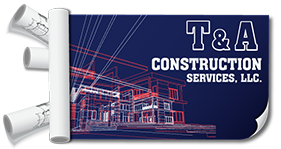BLOG

Building Energy-Efficient Homes in New Mexico’s Desert Climate
Step into the Future of Desert Living: Mastering Energy-Efficient Construction in New Mexico's Rugged Terrain! Amidst the fiery skies and rough landscapes of New Mexico lies an extraordinary vision—a paradigm shift in creating habitats that not only survive but thrive. The relentless sun and frosty nights craft a formidable environment, yet with smart choices like precision-engineered insulation and strategically sized HVAC systems, homeowners seize control — ensuring cozy and environmentally friendly dwellings. Be a part of the movement: as architects and builders unite to surpass rigorous energy requirements, they unlock a world of avant-garde design thinking. Here, in the heart of the desert, we’re tearing down the old blueprints and erecting beacons of innovation, where homes harmonize with the harsh elements, focusing on residents' welfare and ecological harmony. For homeowners, builders, or green advocates, delving into the art of crafting these energy-efficient New Mexico abodes is your invitation to join the crusade for a greener tomorrow.
Harnessing Solar Power for Energy Efficiency
New Mexico boasts more than 300 days of sunshine annually, making solar power a cornerstone of any energy-efficient new construction New Mexico strategy. By installing photovoltaic panels or solar thermal systems, homeowners can offset a significant portion of their electricity needs. Photovoltaic arrays convert sunlight directly into electricity, reducing reliance on grid power and keeping utility bills in check. In addition to rooftop installations, building-integrated photovoltaics (BIPV) can merge aesthetic appeal with energy production by incorporating solar panels into roofs, facades, or skylights. Net metering policies in New Mexico allow homeowners to sell excess power back to the grid, turning their homes into miniature power plants. Solar water heaters provide another avenue for efficiency by using the sun’s energy to preheat domestic hot water, slashing energy costs. When sizing solar arrays, it’s critical to analyze your home’s energy consumption patterns, available roof space, and orientation to maximize the system’s output. To explore how expert builders can assist you, consider contact our team for personalized consultation.
Selecting the Right Insulation Materials
Choose materials with high R-values to block radiant heat gain.
Use spray foam insulation for air sealing and moisture resistance.
Consider rigid foam board for continuous insulation over walls and roof sheathing.
Proper insulation is vital for maintaining indoor comfort in both scorching summer heat and chilly winter nights. Blown-in cellulose offers an eco-friendly solution often made from recycled paper. Reflective radiant barriers under roof decks can further reduce heat gain by reflecting infrared radiation away from living spaces. Combining these layers ensures your home remains cool when temperatures soar and retains warmth during crisp desert nights.
Optimal HVAC System Design for Desert Climates
Designing the right heating, ventilation, and air conditioning system requires careful attention to HVAC sizing. Oversized units cycle on and off too frequently, wasting energy and compromising humidity control, while undersized units struggle to maintain comfort. Proper duct design, zoning strategies, and high-efficiency equipment work together to deliver consistent indoor temperatures and improved air quality, aligning with New Mexico’s energy codes for new construction. If you’re planning a custom project, learn more about regional expertise through new construction in Lovington or new construction in Eunice.
Passive Cooling Techniques for Hot Summers
Use deep roof overhangs, pergolas, and adjustable louvers for shading.
Incorporate thermal mass elements like adobe or concrete floors.
Leverage courtyards and shaded patios for evaporative cooling.
Shading devices block direct sunlight and lower indoor temperatures before air conditioning is needed. Exterior window treatments enhance comfort without compromising views. Trombe walls and night flush ventilation create natural airflow, ensuring comfort while minimizing reliance on mechanical systems. These techniques make energy-efficient new construction New Mexico homes more sustainable year-round.
Embracing Natural Light and Ventilation
Orient living spaces to the south for maximum daylight penetration.
Use clerestory windows and skylights for illumination and ventilation.
Incorporate cross-ventilation with well-placed openings and ceiling fans.
Natural ventilation and thoughtful window placement allow homes to harness prevailing winds, reducing cooling loads and improving air quality. Breezeways and open-air corridors enhance air movement while connecting indoor and outdoor environments seamlessly.
Importance of Water-Efficient Fixtures
Water conservation complements energy efficiency in desert climates where water scarcity is constant. Low-flow faucets, dual-flush toilets, and high-efficiency showerheads cut household water use by up to 30 percent. Tankless water heaters save both energy and water by supplying hot water only when needed. When integrated into an energy-efficient new construction New Mexico home, graywater systems and rainwater harvesting provide additional sustainability. For guidance on eco-conscious home designs, get in touch with T&A Construction Services.
Landscaping for Energy Conservation
Strategically designed xeriscapes save water and provide shading to reduce heat gain. Native, drought-tolerant plants such as agave, yucca, and succulents require minimal irrigation and thrive in New Mexico’s desert climate. Placing deciduous trees on the western and southern sides of a home creates seasonal shade. Hardscape elements like stone walls or gravel beds require careful design to prevent heat islands. Permeable paving materials reduce stormwater runoff and recharge groundwater, supporting local ecosystems.
Sustainable Materials Selection for Construction
Choosing materials with low embodied energy and high durability supports sustainability and energy efficiency. Locally sourced adobe or rammed earth walls provide thermal mass and reduce transportation footprints. Recycled steel and sustainably harvested timbers add strength and warmth. Low-VOC paints and finishes improve indoor air quality and meet energy codes. Green roof assemblies insulate and mitigate runoff, further enhancing an energy-efficient new construction New Mexico project’s performance.
Building Codes and Regulations in New Mexico
New Mexico enforces the 2018 International Energy Conservation Code (IECC) with state-specific amendments. These regulations define insulation levels, HVAC efficiency, and lighting power densities. Compliance requires modeling of the thermal envelope and verification through inspections. Staying informed ensures energy-efficient new construction New Mexico projects meet standards and qualify for incentives. Local guidelines like the Albuquerque Energy Conservation Code and Santa Fe Green Building standards further promote sustainability.
FAQs
How can I make my home more energy-efficient in New Mexico?
Focus on insulation, passive cooling, and solar energy to maximize efficiency under desert conditions.
What materials work best for desert construction?
Adobe, rammed earth, and insulated concrete forms perform well due to their thermal mass and durability.
Do energy-efficient homes require special maintenance?
Not necessarily. Regular HVAC servicing and solar panel cleaning are usually sufficient to maintain efficiency.
Are there rebates for energy-efficient construction in New Mexico?
Yes, state and utility programs offer incentives for energy-efficient appliances, HVAC systems, and solar installations.
Can passive design reduce air conditioning needs?
Absolutely. Proper orientation, shading, and ventilation can significantly reduce or even eliminate cooling demands.
Achieving Sustainable Living in New Mexico's Desert Climate
Combining solar power, advanced insulation, and precise HVAC sizing makes energy-efficient new construction New Mexico both feasible and rewarding. With passive cooling, natural lighting, and water-efficient fixtures, homes offer year-round comfort without high utility bills. Thoughtful material selection and adherence to codes ensure lasting performance. Together, these strategies empower builders and homeowners to transform New Mexico’s arid landscapes into thriving, sustainable communities.

Are you looking for reliable construction solutions? At T & A Construction Services LLC, we've built our reputation on 25 years of solid expertise in Monument, New Mexico. We are licensed, insured, and committed to turning your construction needs into achievements. Whether a minor adjustment or a significant development, we manage every project with sharp attention to detail and a strong commitment to integrity and quality.
